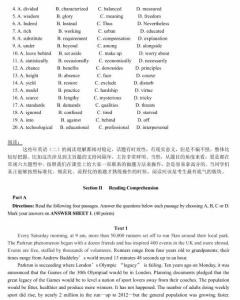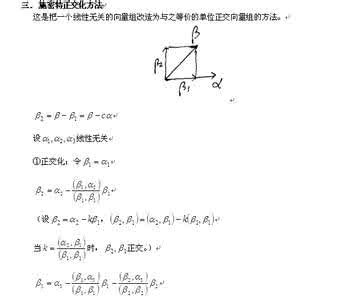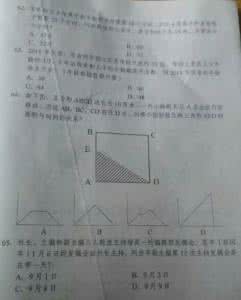2014年管理类联考英语二真题 Section I Use of English
Directions:Read the following text. Choose the best word(s) for each numbered blank and mark A, B, C or D on ANSWER SHEET. (10 points) Thinner isn’t always better. A number of studies have __1___ that normal-weight people are in fact at higher risk of some diseases compared to those who are overweight. And there are health conditions for which being overweight is actually ___2___. For example, heavier women are less likely to develop calcium deficiency than thin women. ___3___ among the elderly, being somewhat overweight is often an ___4___ of good health. Of even greater ___5___ is the fact that obesity turns out to be very difficult to define. It is often defined ___6___ body mass index, or BMI. BMI ___7__ body mass divided by the square of height. An adult with a BMI of 18 to 25 is often considered to be normal weight. Between 25 and 30 is overweight. And over 30 is considered obese. Obesity, ___8___,can be divided into moderately obese, severely obese, and very severely obese.
While such numerical standards seem , they are not. Obesity is probably less a Today we have a(an) _14 _ to label obesity as a disgrace.The overweight are sometimes _15_in the media with their faces covered. Stereotypes _16_ with obesity
include laziness, lack of will power,and lower prospects for success.Teachers,employers,and health professionals have been shown to harbor biases against the obese. _17_very young children tend to look down on the overweight, and teasing about body build has long been a problem in schools. 1. [A] denied [B] conduced [C] doubled [D] ensured
2. [A] protective [B] dangerous [C] sufficient [D]troublesome
3. [A] Instead [B] However [C] Likewise [D] Therefore
4. [A] indicator [B] objective [C] origin [D] example
5. [A] impact [B] relevance [C] assistance [D] concern
6. [A] in terms of [B] in case of [C] in favor of [D] in of
7. [A] measures [B] determines [C] equals [D] modifies
8. [A] in essence [B] in contrast [C] in turn [D] in part
9. [A] complicated [B] conservative [C] variable [D] straightforward
10. [A] so [B] unless [C] since [D] while
11. [A] shape [B] spirit [C] balance [D] taste
12. [A] start [B] qualify [C] retire [D] stay
13. [A] strange [B] changeable [C] normal [D] constant
14. [A] option [B] reason [C] opportunity [D] tendency
15. [A] employed [B] pictured [C] imitated [D] monitored
16. [A] compared[B] combined [C] settled [D] associated
17. [A] Even [B] Still [C] Yet [D] Only
18. [A] despised [B] corrected [C] ignored [D] grounded
19. [A] discussions [B] businesses [C] policies [D] studies
20. [A] for [B] against [C] with [D] without
Section II Reading Comprehension
Part A
Directions:Read the following four texts. Answer the questions below each text by choosing A, B, C or D. Mark your answers on ANSWER SHEET. (40 points) Text 1
What would you do with 590m? This is now a question for Gloria Mackenzie, an 84-year-old widow who recently emerged from her small, tin-roofed house in Florida to collect the biggest undivided lottery jackpot in history. If she hopes her new-found for tune will yield lasting feelings of fulfillment, she could do worse than read Happy Money by Elizabeth Dumn and Michael Norton.
These two academics use an array of behavioral research to show that the most rewarding ways to spend money can be counterintuitive. Fantasies of great wealth often involve visions of fancy cars and extravagant homes. Yet satisfaction with these
material purchases wears off fairly quickly what was once exciting and new becomes old-hat; regret creeps in. It is far better to spend money on experiences, say Ms Dumn and Mr Norton, like interesting trips, unique meals or even going to the cinema. These purchases often become more valuable with time-as stories or memories-particularly if they involve feeling more connected to others.
This slim volume is packed with tips to help wage slaves as well as lottery winners get the most
Readers of “HappyMoney” are clearly a privileged lot, anxious about fulfillment, not hunger.Money may not quite buy happiness, but people in wealthier countries are generally happier than those in poor ones. Yet the link between feeling good and spending money on others can be seen among rich and poor people around the world, and scarcity enhances the pleasure of most things for most people. Not everyone will agree with the authors’ policy ideas, which range from mandating more holiday time to reducing tax incentives for American homebuyers. But most people will come away from this book believing it was money well spent.
21. According to Dumn and Norton,which of the following is the most rewarding purchase? [A]A big house
[B]A special tour
[C]A stylish car
[D]A rich meal
22. The author’s attitude toward Americans’ watching TV is
[A]critical
[B]supportive
[C]sympathetic
[D]ambiguous
23. Macrib is mentioned in paragraph 3 to show that
[A]consumers are sometimes irrational
[B]popularity usually comes after quality
[C]marketing tricks are after effective
[D]rarity generally increases pleasure
24. According to the last paragraph,Happy Money
[A]has left much room for readers’criticism
[B]may prove to be a worthwhile purchase
[C]has predicted a wider income gap in the us
[D]may give its readers a sense of achievement
25. This text mainly discusses how to
[A]balance feeling good and spending money
[B]spend large sums of money won in lotteries
[C]obtain lasting satisfaction from money spent
[D]become more reasonable in spending on luxuries
Text 2
An article in Scientific America has pointed out that empirical research says that, actually, you think you’re more beautiful than you are. We have a deep-seated need to feel good about ourselves and we naturally employ a number of self-enhancing strategies to research into what the call the “above average effect”, or “illusory superiority”, and shown that, for example, 70% of us rate ourselves as above average in leadership, 93% in driving and85% at getting on well with others—all obviously statistical impossibilities.
We rose tint our memories and put ourselves into self-affirming situations. We become defensive when criticized, and apply negative stereotypes to others to boost our own esteem, we stalk around thinking we’re hot stuff.
Psychologist and behavioral scientist Nicholas Epley oversaw a key studying into self-enhancement and attractiveness. Rather that have people simply rate their beauty compress with others, he asked them to identify an original photograph of themselves’ from a lineup including versions that had been altered to appear more and less attractive. Visual recognition, reads the study, is “an automatic psychological process occurring rapidly and intuitively with little or no apparent conscious deliberation”. If the subjects quickly chose a falsely flattering image- which must did- they genuinely believed it was really how the looked. Epley found no significant gender difference in responses. Nor was there any evidence that, those who self-enhance the must (that is, the participants who thought the most positively doctored picture were real) were doing so to make up for profound insecurities. In fact those who thought that the images higher up the attractiveness scale were real directly corresponded with those who showed other makers for having higher self-esteem. “I don’t think the findings that we having have are any evidence of personal delusion”, says Epley. “It’s a reflection simply of people generally thinking well of themselves’. If you are depressed, you won’t be self-enhancing.
Knowing the results of Epley ’s study, it makes sense that why people heat photographs of themselves Viscerally-on one level, they don’t even recognise the person in the picture as themselves, Facebook therefore, is a self-enhancer’s paradise,where people can share only the most flattering photos, the cream of their wit ,style ,beauty, intellect and lifestyle it’s not that people’s profiles are
dishonest,says Catalina Toma of Wiscon—Madison university ,”but they portray an idealized version of themselves.
26. According to the first paragraph, social psychologist have found that ______.
[A] our self-ratings are unrealistically high
[B] illusory superiority is baseless effect
[C] our need for leadership is unnatural
[D] self-enhancing strategies are ineffective
27. Visual recognition is believed to be people’s______
[A] rapid watching
[B] conscious choice
[C] intuitive response
[D] automatic self-defence
28. Epley found that people with higher self-esteem tended to______
[A] underestimate their insecurities
[B] believe in their attractiveness
[C] cover up their depressions
[D] oversimplify their illusions
29.The word “Viscerally”(Line 2,para.5) is closest in meaning to_____.
[A]instinctively
[B]occasionally
[C]particularly
[D]aggressively
30. It can be inferred that Facebook is self-enhancer’s paradise because people can _____.
[A]present their dishonest profiles
[B]define their traditional life styles
[C]share their intellectual pursuits
[D]withhold their unflattering sides
Text 3
The concept of man versus machine is at least as old as the industrial revolution, but this phenomenon tends to be most acutely felt during economic downturns and fragile recoveries. And yet, it would be a mistake to think we are right now simply experiencing the painful side of a boom and bust cycle. Certain jobs have gone away for good, outmoded by machines. Since technology has such an insatiable appetite for eating up human jobs, this phenomenon will continue to restructure our economy in ways we can't immediately foresee.
When there is exponential improvement in the price and performance of technology, jobs that were once thought to be immune from automation suddenly become threatened. This argument has attracted a lot of attention, via the success of the book Race Against the Machine, by Erik Brynjolfsson and Andrew McAfee, who both hail from MIT's Center for Digital Business.
This is a powerful argument, and a scary one. And yet, John Hagel, author of The Power of Pull and other books, says Brynjolfsson and McAfee miss the reason
why these jobs are so vulnerable to technology in the first place.
Hagel says we have designed jobs in the U.S. that tend to be
It's time to reinvent the formula for how work is conducted, since we are still relying on a very 20th century notion of work, Hagel says. In our rapidly changing economy, we more than ever need people in the workplace who can take initiative and exercise their imagination
As Hagel notes, Brynjolfsson and McAfee indeed touched on this point in their book. We need to reframe race against the machine as race with the machine. In other words, we need to look at the ways in which machines can augment human labor rather than replace it. So then the problem is not really about technology, but rather,
31. According to the first paragraph, economic downturns would _____.
[A]ease the competition of man vs. machine
[B]highlight machines’ threat to human jobs
[C]provoke a painful technological revolution
[D]outmode our current economic structure
32. The authors of Race Against the Machine argue that _____.
[A]technology is diminishing man’s job opportunities
[B]automation is accelerating technological development
[C]certain jobs will remain intact after automation
[D]man will finally win the race against machine
33. Hagel argues that jobs in the U.S. are often ___ .
[A]performed by innovative minds
[B]scripted with an individual style
[C]standardized without a clear target
[D]designed against human creativity
34. According to the last paragraph, Brynjolfsson and McAfee discussed ___ .
[A]the predictability of machine behavior in practice
[B]the formula for how work is conducted efficiently
[C]the ways machines replace human labor in modern times
[D]the necessity of human involvement in the workplace
35. Which of the following could be the most appropriate title for the text?
[A]How to Innovate Our Work Practices
[B]Machines will Replace Human Labor
[C]Can We Win the Race Against Machines
[D]Economic Downturns Stimulate Innovations Text 4
When the government talks about infrastructure contributing to the economy the
focus is usually on roads, railways, broadband and energy. Housing is seldom
mentioned.
Why is that? To some extent the housing sector must shoulder the blame. We
have not been good at communicating the real value that housing can contribute to
economic growth. Then there is the scale of the typical housing project. It is hard to
shove for attention among multibillion-pound infrastructure project, so it is inevitable
that the attention is focused elsewhere. But perhaps the most significant reason is that
the issue has always been so politically charged.
Nevertheless, the affordable housing situation is desperate. Waiting lists increase

all the time and we are simply not building enough new homes.
The comprehensive spending review offers an opportunity for the government to
help rectify this. It needs to put historical prejudices to one side and take some steps
to address our urgent housing need.
There are some indications that it is preparing to do just that. The communities
minister, Don Foster, has hinted that George Osborne, Chancellor of the Exchequer,
may introduce more flexibility to the current cap on the amount that local authorities
can borrow against their housing stock debt. Evidence shows that 60,000 extra new
homes could be built over the next five years if the cap were lifted, increasing GDP
by 0.6%.
Ministers should also look at creating greater certainty in the rental environment,
which would have a significant impact on the ability of registered providers to fund
new developments from revenues.
But it is not just down to the government. While these measures would be
welcome in the short term, we must face up to the fact that the existing £4.5bn
programme of grants to fund new affordable housing, set to expire in 2015,is unlikely
to be extended beyond then. The Labour party has recently announced that it will
retain a large part of the coalition’s spending plans if returns to power. The housing
sector needs to accept that we are very unlikely to ever return to era of large-scale
public grants. We need to adjust to this changing climate.
36. The author believes that the housing sector__.
[A] has attracted much attention
[B] involves certain political factors
[C] shoulders too much responsibility
[D] has lost its real value in economy
37. It can be learned that affordable housing has__.
[A] increased its home supply
[B] offered spending opportunities
[C] suffered government biases
[D] disappointed the government
38. According to Paragraph 5,George Osborne may_______.
[A] allow greater government debt for housing
[B] stop local authorities from building homes
[C] prepare to reduce housing stock debt
[D] release a lifted GDP growth forecast
39. It can be inferred that a stable rental environment would_______.
[A]lower the costs of registered providers
[B]lessen the impact of government interference
[C]contribute to funding new developments
[D]relieve the ministers of responsibilities
40. The author believes that after 2015,the government may______.
[A]implement more policies to support housing
[B]review the need for large-scale public grants
[C]renew the affordable housing grants programme
[D]stop generous funding to the housing sector
Part B Directions:
Read the following text and answer the questions by finding information from the
right column that corresponds to each of the marked details given in the left column.
There are two extra choices in the right column. Mark your answer on ANSWER
SHEET 1. (10 points)
Emerging in the late Sixties and reaching a peak in the Seventies, Land Art was
one of a range of new forms, including Body Art, Performance Art, Action Art and
Installation Art, which pushed art beyond the traditional confines of the studio and
gallery. Rather than portraying landscape, land artists used the physical substance of
eland itself as their medium.
The British land artist, typified by Richard Long’s piece, was not only more
domestically scaled, but a lot quirkier than its American counterpart. Indeed, while
you might assume that an exhibition of Land Art would consist only of records of
works rather than the works themselves, Long’s photograph of his work is the work.
Since his “action” is in the past the photograph is its sole embodiment.
That might seem rather an obscure point, but it sets the tone for an exhibition that
contains a lot of black-and-white photographs and relatively few natural objects. Long
is Britain’s best-known Land Artist and his Stone Circle, a perfect ring of purplish
rocks from Portishead beach laid out on the gallery floor, represents the elegant,
rarefied side of the form. The Boyle Family, on the other hand, stand for its dirty,
urban aspect.
Comprising artists Mark Boyle and Joan Hills and their children, they recreated
random sections of the British landscape on gallery walls. Their Olaf Street Study, a
square of brick-strewn waste ground, is one of the few works here to embrace the
mundanity that characterizes most of our experience of the landscape most of the
time.
Parks feature, particularly in the earlier works, such as John Hilliard’s very
funny Across the Park, in which a long-haired stroller is variously smiled at b y a
pretty girl and unwittingly assaulted in a sequence of images that turn out to be
different parts of the same photograph.
Generally however British land artists preferred to get away from towns,
gravitating towards landscapes that are traditionally considered beautiful such as the
Lake District or the Wiltshire Downs. While it probably wasn’t apparent at the time,
much of this work is permeated by a spirit of romantic escapism that the likes of
Wordsworth would have readily understood. Derek Jarman’s yellow-tinted film
Towards Avebury, a collection of long, mostly still shots of the Wiltshire landscape,
evokes a tradition of English landscape pain ting stretching from Samuel Palmer to
Paul Nash.
In the case of Hamish Fulton, you can’t help feeling that the Scottish artist has
simply found a way of making his love of walking pay. At typical work, such as
Seven Days, consists of a single beautiful black-and-white photograph taken on an
epic walk, with the mileage and number of days taken listed beneath. British Land Art
as shown in this well selected, but relatively modestly y scaled exhibition wasn’t
about imposing on the landscape, more a kind of landscape-orientated light
conceptual art created passing through. It had its origins in the great outdoors, but
the results were as gallery-bound as the paintings of Turner and Constable.
A. originates from a long walk that the artist took.
41.Stone Circle B.illustrates a kind of landscape orientated light conceptual art
42.Olaf Street Study C.reminds people of the English landscape painting tradition
43.Across the Park D. represents the elegance of the British land art
44.Towards Avebury E. depicts the ordinary side of the British land art
45.Seven Days F.embodies a romantic escape into the Scottish outdoors
G. contains images from different parts of the same photograph
Section III Translation
46.Directions:Translate the following text from English into Chinese. Write your
translation on ANSWER SHEET 2. (15 points)
Most people would define optimism as endlessly happy, with a glass that’s
perpetually half fall. But that’s exactly the kind of false cheerfulness that positive
psychologists wouldn’t recommend. “Healthy optimists means being in touch with
reality.” says Tal Ben-Shahar, a Harvard professor, According to Ben- Shalar,realistic
optimists are these who make the best of things that happen, but not those who believe
everything happens for the best.
Ben-Shalar uses three optimistic exercisers. When he feels down-sag, after
giving a bad lecture-he grants himself permission to be human. He reminds himself
that mot every lecture can be a Nobel winner; some will be less effective than others. Next is reconstruction, He analyzes the weak lecture, leaning lessons, for the future about what works and what doesn’t. Finally, there is perspective, which involves acknowledging that in the ground scheme of life, one lecture really doesn’t matter. Section IV Writing
Part A
47. Directions: Suppose you are going to study abroad and share an apartment with john a local student ,write him an email to
1)tells him, about your living habit ,and
2)ask for advice for living there
You should write about 100 words on the ANSWER SHEET.
Do not sign your own name at the end of the letter. Use “Li Ming” instead. Do not write the address. (10 Points)
Part B
48.Write an essay based on the following chart. In your essay, you should
1)interpret the chart, and
2)give your comments.
You should write about 150 words on the ANSWER SHEET. (15points)
百度搜索“爱华网”,专业资料,生活学习,尽在爱华网
 爱华网
爱华网



